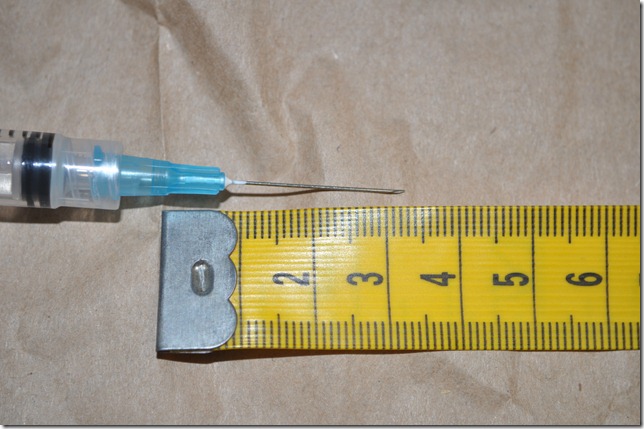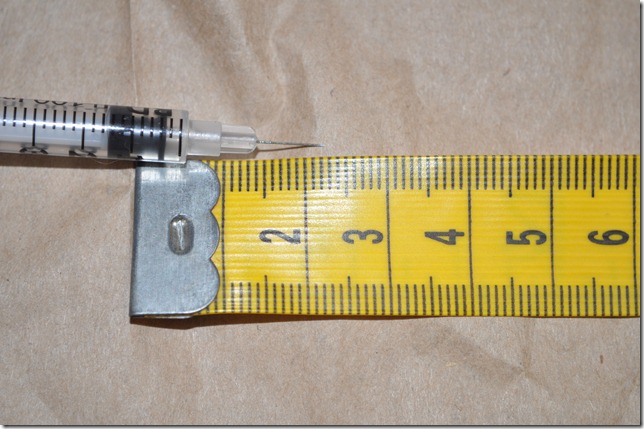NOTE: What follows is not medical advice and should not be construed as such. Speak to your doctor before acting on anything you read in this blog. The author is not responsible for any damage resulting from this or any other post. Take responsibility for your own life.
As I mentioned way back in my progress post, I’m on TRT due to low endogenous testosterone production. When I originally mentioned this, I went through some of the challenges this posed. However, since this was a huge topic on my Reddit thread, and since there are a lot of guys with the problem but very few who will actually talk about it, I thought I would devote some additional space to discussing it.
Symptoms
First, let me briefly discuss the symptoms so that you can have an idea of the effects of hypogonadism. Low testosterone typically exhibits the following effects:
- Impaired emotional state (depression, anxiety, irritability)
- General fatigue
- Poor sleep
- Cognitive problems
- Low libido
For me, the most marked effects were related to mood, energy and libido. I was tired constantly, irritable and depressed, and was uninterested in the opposite sex to the point that it began affecting my relationship with my wife. At first, I chalked this up to getting older combined with being very obese and out of shape. However, as I began getting more in shape and losing weight, I found these symptoms actually increasing instead of improving. At that point, I went to see my doctor, who sent me for blood tests to confirm.
Once I was confirmed to have low testosterone (235 ng/dl, about 30% lower than the average 93 year old man’s), my primary care doctor sent me to a urologist for treatment. He sent me for more tests to confirm the diagnoses and determine the likely cause before suggesting treatment, but in the end, the suggested treatment was TRT.
Treatment Options
The first treatment option we tried was the use of Testim testosterone gel. This is a clear, odorless crème that you apply to your upper arms and shoulders in the morning after showering.
I began with 1 tube per day, which put me at 450 ng/dl. 450 ng/dl is within the normal range, but just barely, as the peak of the normal range is 1000ng/dl, and an average man my age is around 670 ng/dl. For this reason, my doc advised that I could increase the dose to 1.5 tubes per day. However, this only brought me up to 550 ng/dl. In addition, somehow the gel was getting on my wife and causing strange effects in her. This was despite following all of the correct procedures (washing my arms before letting her touch them, etc.). I can only speculate how, but this is a pretty serious problem, so I needed to move to a different delivery mechanism.
At this point, my urologist advised that I move to Testopel, which is a series of injectable testosterone pellets, each 3mm (about 1/8th of an inch) in size. A normal dose is 10 pellets injected under the skin into the subcutaneous fat in a surgical procedure.
The basic procedure involved the doctor prepping the area (lower back or hip, usually), and then making a small incision and inserting the pellets with a tool through the incision. I was fully awake during these procedures, and while not pleasant, they were not hugely painful. As with most outpatient surgical procedures I’ve had, the worst part was the initial anesthetic injections.
After the procedure, I was able to go directly into work, and only suffered mild discomfort as the anesthetic wore off. No complications ever developed in my case, and it wasn’t overall a hugely unpleasant experience. Each injection lasts for three months, so you only have to get this done four times a year.
I began with 10 pellets, and eventually moved to 12 pellets before moving on to other treatments. At 12 pellets, my peak testosterone level was 1140, which is a hair into super-normal territory. However, testosterone levels with Testopel peak shortly after insertion, and decline gradually as more and more of the pellet material dissolves. So by the end of the three month period (and perhaps quite a bit sooner, though I never tested it), my testosterone levels had dropped back to the low 200’s.
Interestingly enough, my reason for moving from Testopel to injections was not due to the procedure itself. Rather, it was due to the previously mentioned peak/trough function. This resulted in a roller coaster type of effect where I felt good for a month, so-so for a month, and bad for a month. I wanted something consistent, so I moved to the last ditch method: Self injections.
Testosterone Injections
Initially, I went with the standard practice of injecting intra-muscularly (in my case, into the thigh). To do this, I followed a guide which is no longer available. However, a very similar guide is here, which I highly recommend for those who are looking for a safe, complete guide to injections. A few things I would add to this for intra-muscular injections are:
- Use the correct needles. My suggestion is to use 25 gauge needles that are 1” in length. The lower (numerically) the gauge, the thicker the needle, and the more it is going to hurt.
- Speed does matter. Inserting the needle quickly but smoothly (think of throwing a dart) tends to be the least painful method.
- Pick a spot on the outer quadrant of your thigh if self injecting. You are less likely to hit any veins on the outside.
- Do not tense your muscle. I suggest completely extending your leg and resting it outstretched with your foot on the ground. Make sure it is completely relaxed and do not tense at any point.
- If it really hurts, you probably hit a vein. Pull out and try at another location.
- If you feel weird, tingly or ‘electric’ type of feeling, or if your leg spontaneously tenses or ‘jumps’, you likely hit a nerve. Pull out and try another spot.
- 5 and 6 are both really rare, but have also both happened to me at least once.
- Inject the solution very slowly. It is oil, and if you inject too fast, it will burn pretty good. My general rule was to inject 1/10 of a ml and then pause for 5 seconds. Repeat until done.
- Pull out slowly, and you may even want to pause with the needle half way out. This lets the blood fill up the hole a little and results in less overall bleeding (though bleeding, in my experience, is pretty light anyway).
- Pain is usually very minimal, despite how scary all of that may have sounded. It isn’t pleasant, but since you only have to do it (at most) once a week, it’s not too bad.
 |
| What a 1″ long, 25 gauge needle looks like. Tape is in metric for all you folks in el foreign-land. |
On dosing, my urologist prescribed me Testosterone Cypionate 200mg/ml, and initially put me on 1 ml (200 mg) injected once every two weeks. With this, I saw good peak levels (around 1000 ng/dl), but they fell to the low 200’s in under a week. This means I spent a few days feeling good, and then the next 10 days feeling bad to awful.
Now, doctors will tell you unequivocally that this can’t happen. Testosterone Cypionate has a half-life of around 8 days, so mathematically, I should have had levels around 500 at one week out dropping to around 250 at the next injection. However, I have proof in the form of blood test results that show me dropping from 1000 to 250 in 6 days.
In any event, this ultimately still had me riding a roller coaster, so with my urologist’s approval, I switched to .5ml (100 mg) per week. This was much better, but ultimately still had me on a 1000 – 250 downward sliding roller coaster, as proven by getting a blood test on the day after injection (peak) and the day before injection (trough). Ultimately, I decided that the only way off of this roller coaster was to do daily injections.
Daily injections is not exactly uncharted territory, but it’s not very common in the medical community. Part of this is due to the pain involved. No one wants to inject themselves with a 1” long needle daily. Luckily, with a daily schedule you only need a very small amount of solution. In my case, I dropped down to .1 ml (20 mg) per day. At this amount, injections into the layer of fat below the skin (subcutaneous injections) become feasible.
Unfortunately, this is also unusual with Testosterone Cypionate, so my first task was to determine if this was a good idea. To do this, I searched for studies on subcutaneous TRT injections, and came up with this study, the preliminary results of which shows subcutaneous injections to be safe and effective. Based on this (and a very large number of anecdotal cases), I decided to give daily subcutaneous injections a shot.
With the dosing at .1 ml per day, I could use a much smaller needle, and ended up settling on insulin syringes with a 31 gauge, 5/16” needle.
 |
| The much more svelte 5/16″, 31 gauge needle |
For injection site, I chose to use my abdomen. Before I get into specifics, let me explain one of the concerns with daily injections. From my experience, injections with this size of needle do not hurt. In most cases, the needle doesn’t hurt at all going in, but even when it does, it is minor compared to the larger needle. However, that doesn’t mean that injections are always pain-free.
As I mentioned earlier, the Testosterone itself is in an oil solution, and you must inject that slowly or you will get a very unpleasant burning sensation. Furthermore, while I’m not sure of the mechanism, when injecting subcutaneously, too much in one area causes a similar painful burning. So, if you inject daily in the same area (or even fairly close), you will likely experience some pain, and possibly even some bruising.
Initially what I did to combat this was to try and always pick a different spot on my abdomen from the day before, but occasionally I would pick a spot that was too close to the injection two days prior, and would still experience some pain. So the system I eventually worked out was to rotate sites based on the day of the week. So, I now inject in the following locations each week:
- Monday: Just below and to the right of the belly button
- Tuesday: Just below and to the left of the belly button
- Wednesday: Oblique area, right side
- Thursday: Oblique area, left side
- Friday: Just above and to the right of the belly button
- Saturday: Just above and to the left of the belly button
- Sunday: Left side between the belly button and oblique
This rotation keeps me from hitting anything painful pretty well, and makes the process much less of a hassle.
 |
| Comparison of needles |
As for the results, I can happily say that out of all of the different TRT regimens, this one has kept my levels the most stable. I don’t feel any type of peak or valley, and blood work shows I am stable at ~1000 ng/dl on a daily basis, which is right where I would like to be.
Hopefully, for those of you who are also unfortunate enough to need TRT, this post can help you and your doctor determine the best treatment option for your specific needs.



Recent Comments